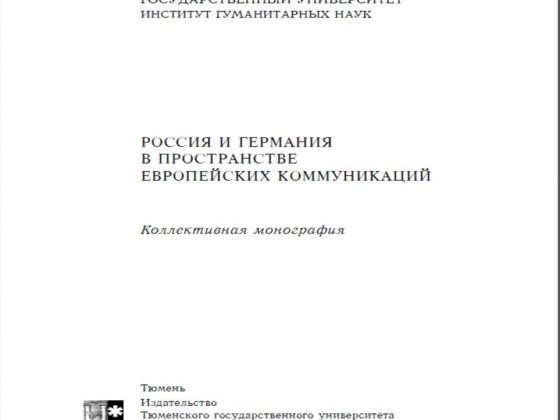The BRICS states—Brazil, Russia, India, China, and South Africa—have increasingly sought to develop and diversify the international monetary system in ways that do not rely on dialogue with the system’s traditional powers. They are now using the BRICS forum to reinforce economic cooperation among themselves and to create alternatives and work-arounds to existing international institutions.
Russia’s official “Concept of the Russian Federation’s Participation in BRICS,” released just ahead of the March 2013 BRICS summit in Durban, South Africa, views the bloc as forging “a new model of global relations, which supersedes the old division lines between the East and the West, or between the North and the South.” Advancing fundamental reform of the international monetary system through the BRICS represents a central pillar of the concept document.
The BRICS states have two major related initiatives in this regard: to promote a multicurrency-based international monetary system by increasing the use of each other’s currencies in place of the U.S. dollar, and to create a BRICS development bank as an alternative to the IMF/World Bank.
These efforts face substantial obstacles, however, chiefly because of the competitive relationship between Russia and China. The yuan has greater potential for internationalization than does the ruble, although Russia is reluctant to acknowledge this fact, given its own international and regional monetary ambitions. The scope of concrete BRICS cooperation in this area thus seems destined to be limited to small and largely symbolic efforts that, on their own, cannot effectively challenge the international status quo.
Which Currencies Will Reign in a Multicurrency World?
The global financial crisis emboldened the BRICS states to take a firm collective stance in favor of diversifying the international monetary system away from reliance on the U.S. dollar. The final statement of the 2012 BRICS summit in New Delhi prominently called for a broad-based international reserve currency system. In June 2012, a special BRICS working group further agreed to develop a regional crisis fund that would involve currency swap arrangements among BRICS states. At the 2013 Durban summit, the BRICS states inked new agreements to increase the use of their own currencies in mutual trade, among other advances in this realm.
All currencies are not created equal, and by any measure the Chinese yuan alone among BRICS currencies has the long-term potential to stand beside the U.S. dollar and the Euro as a viable world currency.
But for Russian leaders, diversifying the international monetary system means, above all, promoting ruble internationalization. Elite-level discussions of the ruble’s potential as a world currency and Moscow’s future as an international financial center symbolically underscore the domestic perception of Russia as a central pole and great power in the international system. Ruble internationalization has also become part of the Russian discourse on modernization and financial sector development, especially as a key means of pulling in long-term investment.
Perhaps most importantly, Russian leaders believe that the ruble should become the dominant regional currency in much of the post-Soviet world. This is motivated by political interests as well as economic ones, as Russian leaders intend to maintain preeminence in what they see as their traditional regional backyard, the so-called “near abroad.” Working to expand the role of the ruble has become a part of Russia’s general economic policy in post-Soviet Eurasia.
Russia’s ambitions for ruble internationalization place clear limits on its interest and ability to promote the Chinese yuan as an alternative to the U.S. dollar. Russian political and business leaders have worked together to increase their currency cooperation with China. In late December 2010, Russia's MICEX exchange (now Moscow Exchange, after its merger with RTS) began renminbi[1] (RMB)-ruble trading following China’s launch of RMB-ruble exchange trading the previous month. Russia’s Vneshtorgbank (VTB), a major state-owned bank, announced in October 2011 that it would begin accepting deposits in RMB. As a key currency diversification move in December 2010, VTB also became the first non-Asian emerging market company to issue dim sum bonds; another successful issue followed in October 2012. In September 2012, the two countries agreed to use each other’s currencies to settle a portion of Russian natural gas imports to China. Russian President Vladimir Putin has also expressed approval for expanding the use of rubles and RMB to service the two countries’ bilateral trade more broadly, signing an agreement to that effect with Chinese premier Wen Jiabao in late 2011.
At the same time, Russian government leaders do not want the yuan to challenge the existing or potential international reach of the ruble. This is true both for the Russian Far East and, especially, for Central Asia. The Central Asian situation became a growing concern for Russian leaders after the 2008 financial crisis, when for the first time Chinese trade volumes in Central Asia outstripped those of Russia. Russia has actively used regional development initiatives such as the Eurasian Economic Community to promote the ruble in the region as an express challenge to both the U.S. dollar and the Chinese yuan. China’s increasing economic influence in Central Asia and on the international scene more broadly presents Russian leaders with a growing dilemma: how to develop an economic partnership with China that does not leave Russia as a junior partner, mere raw materials exporter, or former regional leader.
Indeed, Russia’s Strategy 2020 plan released in March 2012 explicitly cast the ruble and yuan as competitors on the international and regional financial scenes:
The main external risks for Russia are connected with the following factor: the strengthening of new centers of economic power, in particular China . . . in connection with this one can emphasize . . . the course of the internationalization of the yuan, which will gradually transform the yuan into a global settlement currency, and then an investment and reserve currency. In the most realistic scenario, by 2020 the first step will be completed – turning the yuan into a world settlement currency. However, in the case of the more radical scenario in which China turns to emitting a regional (and possibly, a world) reserve currency, this could lead to instability in the international financial system, to limits on the possibility to use the Russian ruble in international settlements, and to “currency wars.”
The strengthening of the position of China in Central Asia could undermine the prospects for further development in the region of Russia’s integration projects (competition for the region’s energy resources, the weakening of customs control on the southern border of the Customs Union between Kazakhstan and China, the disruption of plans for the further development of the Customs Union).
The new and more active negotiating and interventionist conduct of China as a “wealthy newcomer” in the “club of world leaders,” the strengthening of the G-2 (the U.S. and China) in managing global economic processes, and the growing influence of China in the IMF and WTO is to the detriment of third countries, including Russia.[2]
Although Russian political leaders would not jeopardize their relationship with China by speaking so bluntly themselves (the Strategy-2020 report is not a government publication per se), Russian leaders’ words and actions regarding yuan internationalization reflect these concerns. Russian government overtures to the yuan have been gradual and based on strict reciprocity, as existing arrangements for ruble-yuan trading and settlement indicate. The Russian government holds no reserves in yuan and has no plans to do so. President Putin has, on several occasions, been somewhat dismissive of the yuan. While promoting the idea of the ruble as a regional currency, he pointed out in August 2011 that “the ruble is quite a stable, reliable, and freely convertible currency, unlike the Chinese yuan.” The only Russian government official who regularly mentioned the yuan as a viable potential international reserve currency without insisting on the parallel or superior status of the ruble was former finance minister Alexei Kudrin, who left the government in September 2011.
The Troubled BRICS Development Bank
These strains have become most evident in recent attempts to create a common BRICS development bank. The 2012 BRICS summit in New Delhi formally proposed the creation of such a development bank, an initiative welcomed by, among others, World Bank president Robert Zoellick. One year later, however, the BRICS states had come no closer to agreeing on any of the most basic parameters for such a bank, including the size, the location, the staffing, the relative contributions, or the voting scheme. The 2013 Durban declaration was reduced to stating nothing more than:
[T]he establishment of a New Development Bank is feasible and viable. We have agreed to establish the New Development Bank. The initial contribution to the BRICS Development Bank should be substantial and sufficient for the Bank to be effective in financing infrastructure.
China has made a strong play for dominance in the new institution, selecting high-profile China Development Bank director Chen Yuan as its point person in creating the new bank and volunteering itself as not only the bank’s leading contributor, but as the host country. Russia has resisted Chinese efforts to exert control over the bank in great part because Russia thinks that China aims to use it to internationalize the yuan, particularly in Russia’s backyard.
Capitalization and voting rights represent the most serious sticking points in the negotiations. Wealthy China proposed a bank with starting capital of at least $50 billion (some reports have China proposing as much as $100 billion), offering to invest a majority of the funds given that other members could not contribute enough for the investments to be equal. Russia, wary of potential Chinese dominance, proposed a bank with only $10 billion in initial capital, with each member contributing an equal $2 billion. Similar conflicts have arisen over the voting scheme, which China wants proportional to economic size and capital contribution (with China contributing the largest share), while Russia prefers an equal voice and vote for each BRICS member regardless of the size of participation in the bank’s capital. Such fundamental differences in outlook and strategy bode ill for the future of the new development bank.
Russian Rhetoric, Chinese Realities
Russia and the BRICS have long demanded that the outdated IMF quota system be adjusted so that global economic leaders like Russia and China would no longer have less formal influence in the organization than small European countries like Belgium and Switzerland. Given their position, it is ironic that Russian leaders insist on hamstringing BRICS initiatives to reform the international monetary system by pretending that all of its own members are economic equals. China is the 800-pound gorilla of the BRICS; if BRICS states collectively want to challenge existing Western institutions effectively, they must allow China to take the lead. Promoting the yuan as the key alternative currency rather than competing or feigning equality with it would give the BRICS the best opportunity to mount an attack on the U.S. dollar-based international monetary system. Similarly, allowing China to lead and invest billions in a new BRICS development bank would provide the bank’s only real chance to rival the Bretton Woods twins. Given these realities, the Russian government faces an increasingly stark choice: to challenge the existing structure of the international monetary system or prevent the monetary rise of China at Russia’s expense. All indications so far are that given this choice, Russia prefers to cast its lot with the status quo.
[1] The yuan is the primary unit of the renminbi, which is the official currency of China.
[2] See “Стратегия-2020: Новая модель роста – новая социальная политика [Strategy 2020: A New Model of Growth – A New Social Policy],” pp 806-807. Available at http://2020strategy.ru/
*** Portions of this policy memo are drawn from the author’s forthcoming paper, “Russia: International Monetary Reform and Currency Internationalization,” to be published in the series The BRICS and Asia, Currency Internationalization and International Monetary Reform by the Asian Development Bank, The Centre for International Governance Innovation, and the Hong Kong Institute for Monetary Research.










